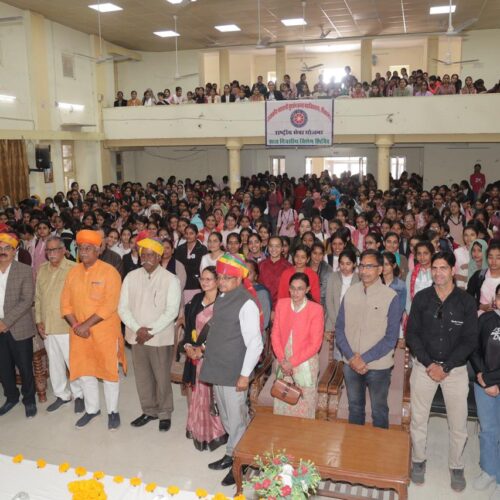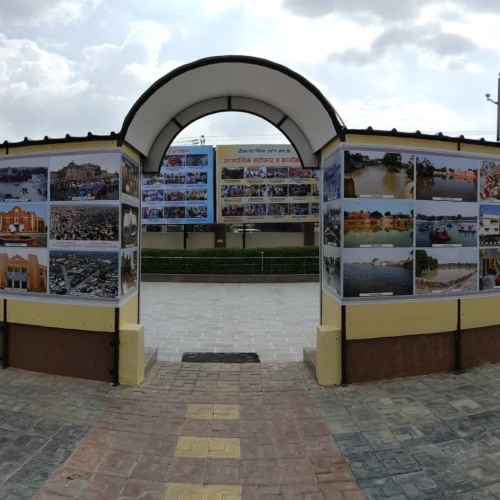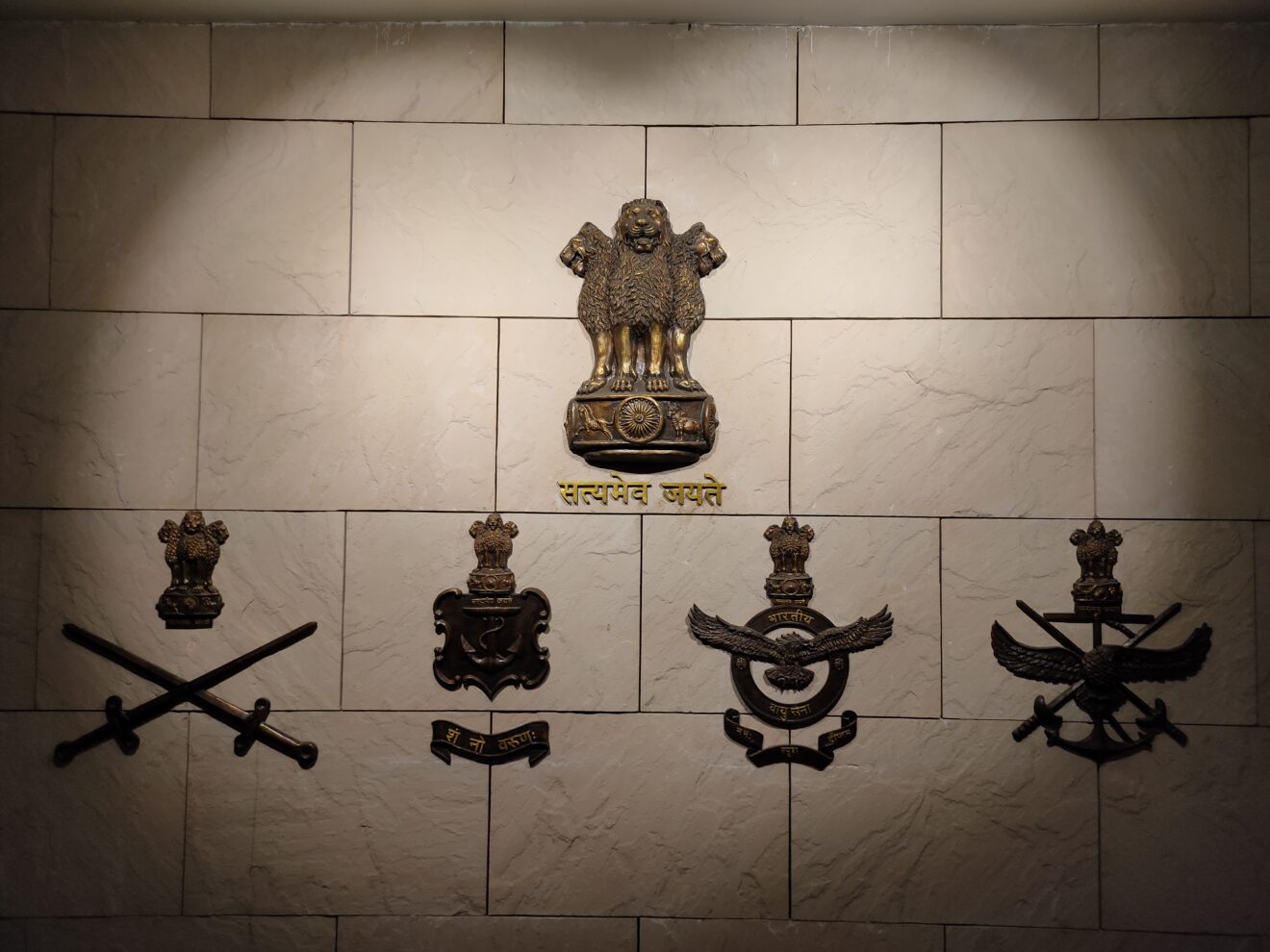BY DEFENCE JOURNALIST SAHIL | T.I.N. NETWORK
India’s Military Parachute Breakthrough: DRDO’s Indigenous Combat Parachute System Successfully Tested at 32,000 ft — A Historic Leap in Defence Self-Reliance
New Delhi | October 16, 2025 —
In a remarkable achievement that redefines India’s progress in high-altitude military systems and indigenous defence innovation, the Defence Research and Development Organisation (DRDO) has successfully conducted a combat freefall jump from an altitude of 32,000 feet using the newly developed Military Combat Parachute System (MCPS). This milestone marks a significant step in India’s journey towards achieving full self-reliance in critical airborne technologies for the armed forces.
The system, designed and developed indigenously by DRDO, represents a major advancement in India’s capability to execute high-altitude insertion operations, especially in challenging combat and special forces scenarios. The test jump showcased the MCPS’s efficiency, reliability, and advanced design parameters, establishing it as a world-class system capable of meeting the operational demands of India’s elite paratroopers.
A Record-Breaking High-Altitude Deployment
The historic test saw the MCPS deployed at an altitude of 30,000 feet, after a freefall from 32,000 feet — making it the only parachute system currently in operational use by the Indian Armed Forces capable of deployment at such extreme altitudes. This capability places India among a select group of nations possessing high-altitude military parachute technology designed for special operations forces and high-risk infiltration missions.
The precision and stability of the system during the jump were demonstrated flawlessly by test jumpers Wing Commander Vishal Lakhesh, VM (Gallantry), Master Warrant Officer R.J. Singh, and Master Warrant Officer Vivek Tiwari, all of whom executed the freefall with exceptional skill and coordination. Their successful descent validated both the aerodynamics and dependability of the indigenous system under real-world combat-like conditions.
Strategic Significance of the Achievement
The development and successful testing of the MCPS hold immense operational significance for India’s armed forces — particularly for the Indian Air Force’s Garud Commandos, the Indian Army’s Para (Special Forces) battalions, and the Indian Navy’s MARCOS units. High-altitude freefall operations are critical for stealth insertions behind enemy lines, strategic reconnaissance, and covert missions where precision, silence, and surprise are key to operational success.
Until now, India’s special operations units relied heavily on imported systems for such high-altitude missions. With the DRDO-developed MCPS proving its capability in extreme atmospheric conditions — including low temperatures, thin air density, and reduced oxygen levels — India has taken a major step toward reducing dependence on foreign suppliers.
A senior DRDO official commented that the MCPS was designed keeping in mind the unique environmental challenges of the Indian subcontinent, particularly the high-altitude regions along the Northern borders, where the combination of cold weather, low oxygen, and reduced air pressure poses severe challenges to standard parachute systems.
Engineering Excellence and Indigenous Design
The Military Combat Parachute System has been engineered to meet stringent international standards of safety and performance. DRDO’s team incorporated state-of-the-art materials, precision canopy design, and advanced automatic activation devices (AADs) to ensure that the parachute can perform reliably across diverse operational conditions.
Its canopy fabric, suspension lines, and harness systems are made using high-tensile strength, lightweight composite materials that provide both durability and maneuverability. The system is equipped with an oxygen supply integration unit, enabling jumpers to operate safely in low-oxygen conditions during extremely high-altitude insertions.
Additionally, the MCPS features enhanced glide control and directional stability, allowing paratroopers to navigate accurately towards designated drop zones even under turbulent wind conditions.
According to defence scientists, extensive trials were conducted at DRDO’s Aerial Delivery Research and Development Establishment (ADRDE), Agra, followed by field validation in coordination with the Indian Air Force’s Paratroopers Training School (PTS). The system has now been cleared for advanced operational evaluations, paving the way for eventual induction into service.
A Step Towards Atmanirbhar Bharat in Airborne Warfare
This successful test aligns perfectly with the Government of India’s ‘Atmanirbhar Bharat’ vision, which seeks to empower domestic industries and R&D institutions to produce world-class military equipment indigenously.
Defence experts believe that DRDO’s MCPS will soon become a symbol of India’s growing competence in cutting-edge airborne systems. Beyond operational benefits, it will also lead to substantial cost savings and technological independence in a domain that has traditionally been dominated by a handful of foreign manufacturers.
The achievement also reinforces the confidence of India’s armed forces in homegrown technology, showcasing how collaboration between DRDO scientists and military professionals can result in systems tailored to Indian operational requirements — from the icy heights of the Himalayas to the desert frontiers of Rajasthan.
Voices from the Field
Speaking after the successful test jump, Wing Commander Vishal Lakhesh, VM (G), one of the test jumpers, lauded the system’s stability and responsiveness. “The MCPS is a leap forward in our capability to operate at high altitudes with precision and safety. It’s a proud moment to see a completely Indian system match the standards of the best in the world,” he said.
Master Warrant Officer R.J. Singh added that the indigenous system provided “seamless control during deployment and descent,” while MWO Vivek Tiwari described it as “a game-changer for high-altitude operations.”
Future Prospects and Operational Induction
With this successful trial, the DRDO’s MCPS is expected to undergo a final series of operational evaluations and certification tests before being handed over to the Indian Army, Air Force, and Navy special units. Once inducted, it will empower Indian soldiers to execute deep-penetration and high-altitude missions with greater autonomy, safety, and stealth.
The system could also open avenues for export opportunities, particularly to friendly nations seeking reliable high-altitude parachuting systems for their special forces — further strengthening India’s position as an emerging global defence technology hub.
Defence analysts view this achievement as a critical component of India’s broader strategy to modernize its airborne capabilities, alongside the development of new UAVs, air-drop systems, and precision logistics delivery mechanisms for remote terrains.
A Defining Moment for Indian Defence Innovation
The successful testing of the MCPS from 32,000 feet is not just a technological achievement; it symbolizes India’s maturing defence R&D ecosystem and its unwavering commitment to operational excellence through indigenous innovation.
As India continues to build its defence capabilities from land to air and sea, the DRDO’s innovation in parachute technology adds another proud chapter to the nation’s growing list of indigenous military triumphs — reinforcing the belief that India’s armed forces can now depend confidently on Indian science and engineering to safeguard national interests.
BY DEFENCE JOURNALIST SAHIL | T.I.N. NETWORK
32 हजार फीट की ऊंचाई से छलांग: DRDO का स्वदेशी मिलिट्री कॉम्बैट पैराशूट सिस्टम (MCPS) सफल — भारत की रक्षा आत्मनिर्भरता की दिशा में ऐतिहासिक छलांग
नई दिल्ली | 16 अक्टूबर 2025 —
भारत ने रक्षा तकनीक के क्षेत्र में एक और ऐतिहासिक उपलब्धि हासिल की है। रक्षा अनुसंधान एवं विकास संगठन (DRDO) ने स्वदेशी रूप से विकसित मिलिट्री कॉम्बैट पैराशूट सिस्टम (MCPS) का 32,000 फीट की ऊंचाई से सफल कॉम्बैट फ्रीफॉल परीक्षण किया है। यह उपलब्धि न केवल भारत की तकनीकी क्षमताओं का प्रमाण है, बल्कि यह देश की आत्मनिर्भरता की दिशा में एक निर्णायक कदम भी है।
यह पैराशूट सिस्टम पूरी तरह से भारतीय वैज्ञानिकों द्वारा डिजाइन और विकसित किया गया है और इसे भारतीय सशस्त्र बलों की विशेष आवश्यकताओं को ध्यान में रखकर बनाया गया है। यह उपलब्धि भारत को उन चुनिंदा देशों की सूची में शामिल करती है जो इतनी ऊंचाई पर संचालन करने वाले अत्याधुनिक पैराशूट सिस्टम के निर्माण में सक्षम हैं।
इस परीक्षण में MCPS की कार्यक्षमता, सुरक्षा और उन्नत डिजाइन को साबित किया गया। यह सफलता भारत की उन विशेष सेनाओं — पैरा (स्पेशल फोर्सेस), गरुड़ कमांडो और मरीन कमांडोज (MARCOS) — के लिए बेहद अहम है जो दुश्मन के इलाके में गुप्त और ऊंचाई वाले मिशन अंजाम देती हैं।
रिकॉर्ड ऊंचाई से छलांग — 30,000 फीट पर पैराशूट ओपनिंग
इस ऐतिहासिक परीक्षण के दौरान पैराशूट को 32,000 फीट की ऊंचाई से फ्रीफॉल कराते हुए 30,000 फीट पर सफलतापूर्वक डिप्लॉय किया गया। यह अब तक का सबसे ऊंचा संचालन करने वाला पैराशूट सिस्टम है जो भारतीय सशस्त्र बलों द्वारा उपयोग के लिए योग्य घोषित किया गया है।
यह कारनामा अंजाम देने वाले अनुभवी टेस्ट जम्पर्स — विंग कमांडर विशाल लखेेश, वीर चक्र (Gallantry), मास्टर वारंट ऑफिसर आर. जे. सिंह, और मास्टर वारंट ऑफिसर विवेक तिवारी — ने अपनी कुशलता और अदम्य साहस के साथ इस मिशन को पूरा किया।
32,000 फीट की ऊंचाई पर जहां ऑक्सीजन की मात्रा बेहद कम होती है और तापमान शून्य से काफी नीचे चला जाता है, वहां से यह छलांग न केवल एक तकनीकी बल्कि मानव क्षमताओं की भी परीक्षा थी। इसने यह साबित किया कि स्वदेशी MCPS कठिनतम परिस्थितियों में भी पूर्ण स्थिरता और नियंत्रण बनाए रख सकता है।
भारत की सामरिक ताकत के लिए बड़ा कदम
DRDO द्वारा विकसित यह पैराशूट सिस्टम भारतीय सशस्त्र बलों के लिए एक रणनीतिक गेम-चेंजर साबित होगा। यह उच्च ऊंचाई वाले फ्रीफॉल मिशनों, गुप्त अभियानों, रात्रि प्रविष्टि (night insertion) और सीमापार विशेष ऑपरेशनों में अत्यंत उपयोगी रहेगा।
अब तक भारत की विशेष सेनाएं इस तरह के ऑपरेशनों के लिए विदेशी प्रणालियों पर निर्भर थीं। लेकिन MCPS की सफलता के साथ, भारत ने न केवल तकनीकी आत्मनिर्भरता प्राप्त की है बल्कि विदेशी आपूर्तिकर्ताओं पर निर्भरता को भी कम कर दिया है।
DRDO के एक वरिष्ठ अधिकारी ने बताया कि MCPS को विशेष रूप से उत्तर भारत के ऊंचाई वाले सीमावर्ती इलाकों — जैसे लद्दाख और सिक्किम — की परिस्थितियों को ध्यान में रखकर तैयार किया गया है, जहां ठंड, कम वायुदाब और ऑक्सीजन की कमी पैराशूटिंग को बेहद चुनौतीपूर्ण बनाती है।
इंजीनियरिंग उत्कृष्टता और स्वदेशी तकनीकी डिजाइन
MCPS का डिजाइन और निर्माण अंतरराष्ट्रीय सुरक्षा मानकों के अनुरूप किया गया है। इसमें अत्याधुनिक कैनोपी डिजाइन, ऑटोमैटिक एक्टिवेशन डिवाइस (AAD), हाई-स्ट्रेंथ कंपोजिट मटीरियल्स और अत्यधिक टिकाऊ लाइन्स व हार्नेस सिस्टम का उपयोग किया गया है।
पैराशूट में विशेष ऑक्सीजन इंटीग्रेशन यूनिट भी लगाई गई है, जिससे पैराट्रूपर्स अत्यधिक ऊंचाई वाले अभियानों में भी सुरक्षित रूप से सांस ले सकें। इसके अलावा, इसका एयरोडायनामिक डिजाइन और उन्नत ग्लाइड कंट्रोल सिस्टम इसे किसी भी मौसम या वायु प्रवाह में स्थिर बनाए रखता है।
MCPS के विकास में DRDO की एरियल डिलीवरी रिसर्च एंड डेवलपमेंट इस्टैब्लिशमेंट (ADRDE), आगरा की टीम ने अहम भूमिका निभाई। भारतीय वायु सेना के पैरा ट्रूपर्स ट्रेनिंग स्कूल (PTS) के सहयोग से कई फील्ड ट्रायल किए गए। परीक्षणों के बाद अब इस सिस्टम को ऑपरेशनल इवैल्युएशन के अगले चरण के लिए मंजूरी मिल गई है।
‘आत्मनिर्भर भारत’ के सपने को नई उड़ान
यह उपलब्धि प्रधानमंत्री नरेंद्र मोदी की ‘आत्मनिर्भर भारत’ नीति का सशक्त उदाहरण है। यह न केवल तकनीकी आत्मनिर्भरता का प्रतीक है, बल्कि यह दिखाती है कि भारत अब उच्च-स्तरीय रक्षा प्रणालियों के क्षेत्र में स्वयं निर्माता और नवप्रवर्तक बन चुका है।
रक्षा विशेषज्ञों का मानना है कि MCPS आने वाले समय में भारत की एयरबोर्न वारफेयर कैपेबिलिटी का अभिन्न हिस्सा बन जाएगा। इस सिस्टम से न केवल परिचालन दक्षता बढ़ेगी बल्कि लागत में कमी और विदेशी निर्भरता में कमी भी आएगी।
यह सफलता यह भी दर्शाती है कि DRDO और सशस्त्र बलों के वैज्ञानिकों और विशेषज्ञों के बीच सहयोग भारत की जरूरतों के अनुरूप सर्वोत्तम समाधान प्रदान कर सकता है — चाहे वह हिमालय की चोटियां हों या राजस्थान के रेतीले मैदान।
जमीनी अनुभव: बहादुर जम्पर्स की आवाज़
सफल परीक्षण के बाद विंग कमांडर विशाल लखेेश, वीर चक्र (Gallantry) ने कहा,
“MCPS हमारे उच्च ऊंचाई वाले ऑपरेशनों की क्षमता को नई ऊंचाई देता है। यह पूरी तरह भारतीय प्रणाली है जो विश्व के श्रेष्ठ मानकों के बराबर है। यह एक गर्व का क्षण है।”
मास्टर वारंट ऑफिसर आर. जे. सिंह ने इसे “पूर्ण नियंत्रण और स्थिरता प्रदान करने वाला बेहतरीन सिस्टम” बताया, जबकि एमडब्ल्यूओ विवेक तिवारी ने कहा कि “यह ऊंचाई वाले मिशनों के लिए गेम-चेंजर साबित होगा।”
भविष्य की संभावनाएं और सेवा में शामिल होने की राह
MCPS के सफल परीक्षण के बाद अब इसका अगला चरण फाइनल ऑपरेशनल इवैल्युएशन और सर्टिफिकेशन ट्रायल्स का होगा। इसके बाद इसे भारतीय सेना, वायु सेना और नौसेना की विशेष इकाइयों में शामिल किया जाएगा।
यह सिस्टम न केवल देश की तीनों सेनाओं को अधिक स्वायत्तता और सुरक्षा देगा बल्कि भारत को उन देशों की श्रेणी में भी लाएगा जो एक्सपोर्ट-रेडी हाई-एल्टीट्यूड पैराशूट टेक्नोलॉजी रखते हैं। कई मित्र देशों ने पहले ही भारत के इस विकास में रुचि दिखाई है।
रक्षा विश्लेषकों का मानना है कि यह उपलब्धि भारत के एयरबोर्न मॉडर्नाइजेशन प्रोग्राम का अहम हिस्सा बनेगी, जिसमें UAVs, एयर-ड्रॉप सिस्टम्स और प्रिसीजन सप्लाई डिलीवरी तकनीक भी शामिल हैं।
भारत की वैज्ञानिक शक्ति का प्रतीक
32,000 फीट की ऊंचाई से किया गया यह स्वदेशी परीक्षण न केवल एक तकनीकी उपलब्धि है, बल्कि यह भारत की परिपक्व होती रक्षा अनुसंधान प्रणाली और नवाचार क्षमता का प्रतीक भी है।
यह सफलता यह साबित करती है कि भारत अब स्वयं पर भरोसा करने वाले राष्ट्र के रूप में उभर रहा है, जो अपनी रक्षा जरूरतों के लिए विदेशी सहायता पर निर्भर नहीं, बल्कि स्वदेशी विज्ञान और इंजीनियरिंग की शक्ति पर आधारित है।
MCPS की सफलता भारत की उस नई सोच का परिचायक है जो कहती है — “Made in India, for the Indian Armed Forces, with global excellence.”
By Defence Journalist Sahil | T.I.N. Network














Add Comment